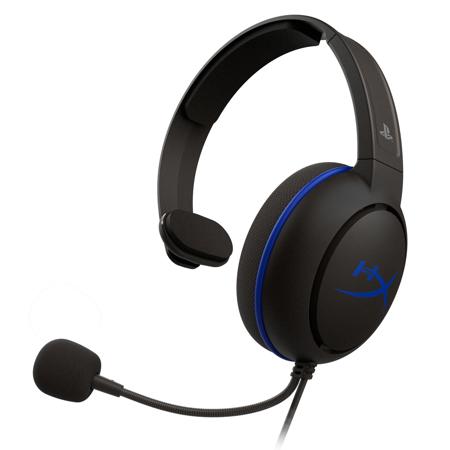

In this position, the ear cups won’t brush against a user’s manly beard or delicate cheeks like they would without the swivel. The ear cups rotate to rest on the users’ clavicles when the headphones are worn around the neck. The swivels allow the cups to conform to the user’s head better, but the primary reason for the twistiness is for stowing the headset when it’s not in use. The cups are mounted to the band with swivels capable of spinning just over ninety degrees. The adjustment notches are well-defined and the headset doesn’t fall out of adjustment easily, even when it’s jerked around or removed from the head with one hand. I wear a size 7-3/8 fitted hat and found the headset most comfortable when each side was adjusted to the fifth notch. The steel slider in the band allows twelve notches on either side of the headsets to accommodate a wide variety of head sizes. Gamers condemned by their families to cool basements may appreciate the added warmth, but others probably won’t like it. The combination of thick foam and vinyl around the earcups helped keep the Stinger’s head pressure under control, though the over-ear design and thick materials made my ears quite sweaty after wearing the Stinger for extended periods of time. The relatively light weight and the entirely conventional design of the headset probably play some role in permitting the unobtrusive clamping force of the band. I never found the headset’s weight to be annoying, even after wearing it for a long time.

These cans weigh in at just under ten ounces (275g). The contact isn’t immediately unpleasant, but it can become annoying over time. Large-eared users might make contact with the black fabric covering the hard plastic grilles protecting the 50mm drivers. The interiors of the ear cups were about 3/4” deep, 2-3/4” tall, and 1-1/2” wide. All three surfaces are composed of a soft vinyl-like substance backed by a thick layer of cushioning foam. The headphones are intended to contact the user at the same three points most headphones do: the pair of ear cups and the top band. The only elements of the headset that aren’t black are the large red HyperX logos on each ear cup and the steel slider that is exposed if the user’s head is large enough to require the headset to expand from its most compacted form. Perhaps unsurprisingly for a budget headset, the Stinger is constructed primarily from black plastic. We wanted to see whether the Stinger was different, and HyperX was kind enough to send us an example headset for us to put through the wringer.

The Stinger takes the Cloud line to the $50 price point generally inhabited by headsets with questionable build quality, low-fidelity audio, and microphones that will remind users of the early days of cellular phones. As a refresher, the HyperX headset lineup includes the $80 Cloud, the $100 Cloud II, and the top-of-the-line, $120 Cloud Revolver. The HyperX Cloud Stinger is the latest entry into the popular Cloud line of gaming headsets.


 0 kommentar(er)
0 kommentar(er)
